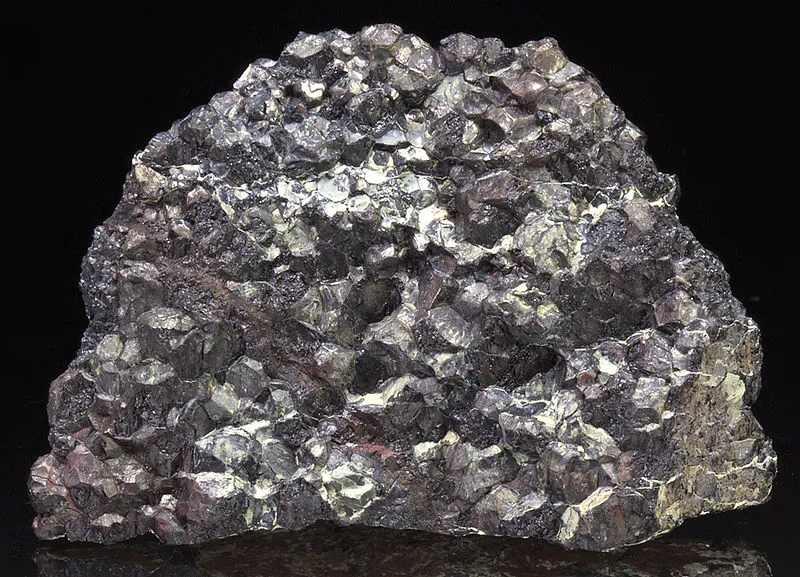
Appearance
The most significant chromium ore is chromite. Although they are rare, crystals are octahedral when they are encountered. Chromite is typically huge, shaped like lenses or tabular bodies, or it can be scattered like granules. It can occasionally be discovered in diamonds as a crystalline inclusion. Chromite is a dark brown to black mineral that may also include aluminum and magnesium.
Geographical Distribution
A prevalent ingredient in peridotite rocks and the serpentines made from them is chromite. One of the first minerals to separate from a cooling magma; magmatic differentiation of this kind is assumed to have produced huge amounts of chromite ore.
New Caledonia, Southern Rhodesia, Greece, the USSR, and Canada are major producers of it. Found in the United States in small quantities. It was once produced in Wyoming, North Carolina, Maryland, Pennsylvania, and North Carolina.
History
Wilhelm Haidinger gave the mineral chromite its name in 1845, according to its composition. Louis Nicolas Vauquelin gave the species its original name, fer chromate aluminum, in 1798. Chromium was first discovered by Vauquelin. The most significant chromium ore mineral is chromite.
Chemical Composition
FeCr2O4, or iron chromium oxide, is the formula for the oxide mineral known as chromite. Magnesium can take the place of iron, and ferric iron and aluminum can take the place of chromium.

Types
Stratiform deposits and podiform deposits are the two primary forms of chromite deposits. The primary source of chromite resources are stratiform deposits in layered intrusions, which can be found in Madagascar, Canada, Finland, and South Africa. The main locations of chromite resources from podiform deposits are Kazakhstan, Turkey, and Albania. Significant chromite reserves in both stratiform and podiform deposits are only found in Zimbabwe.
Uses
Because of its great heat stability, chromite can be utilized as a refractory material. The chromium that is derived from chromite is used in alloying and chrome plating to create stainless steel, nichrome, and superalloys that are resistant to corrosion. In addition to being an oxidizing agent for tanning leather, chromium is used as a color in glass, glazes, and paint. It’s occasionally utilized as a gemstone as well.
Often referred to as chrome, this is an extremely important industrial metal. It is robust and corrosion-resistant. This is utilized in the manufacturing of pigments, stainless steel, nonferrous alloys, and chemicals utilized in the tanning process. About 18% of stainless steel typically contains chromium.
The element in stainless steel that hardens and makes it resistant to corrosion is chromium.
Most gleaming auto trim is coated with chromium. Chromium-containing superalloys enable the operation of jet engines in high-stress, chemically oxidizing, and high-temperature situations.
Table





